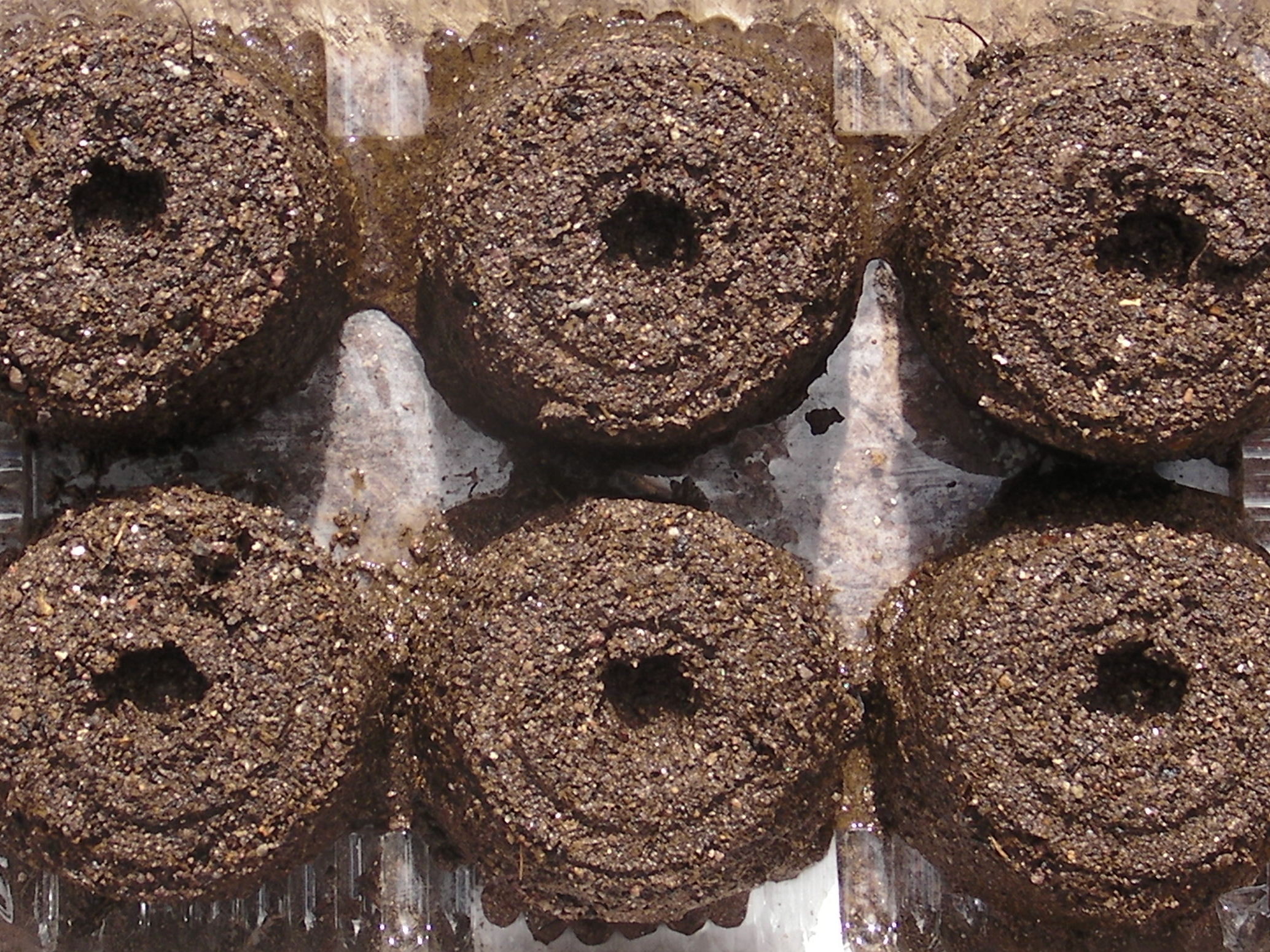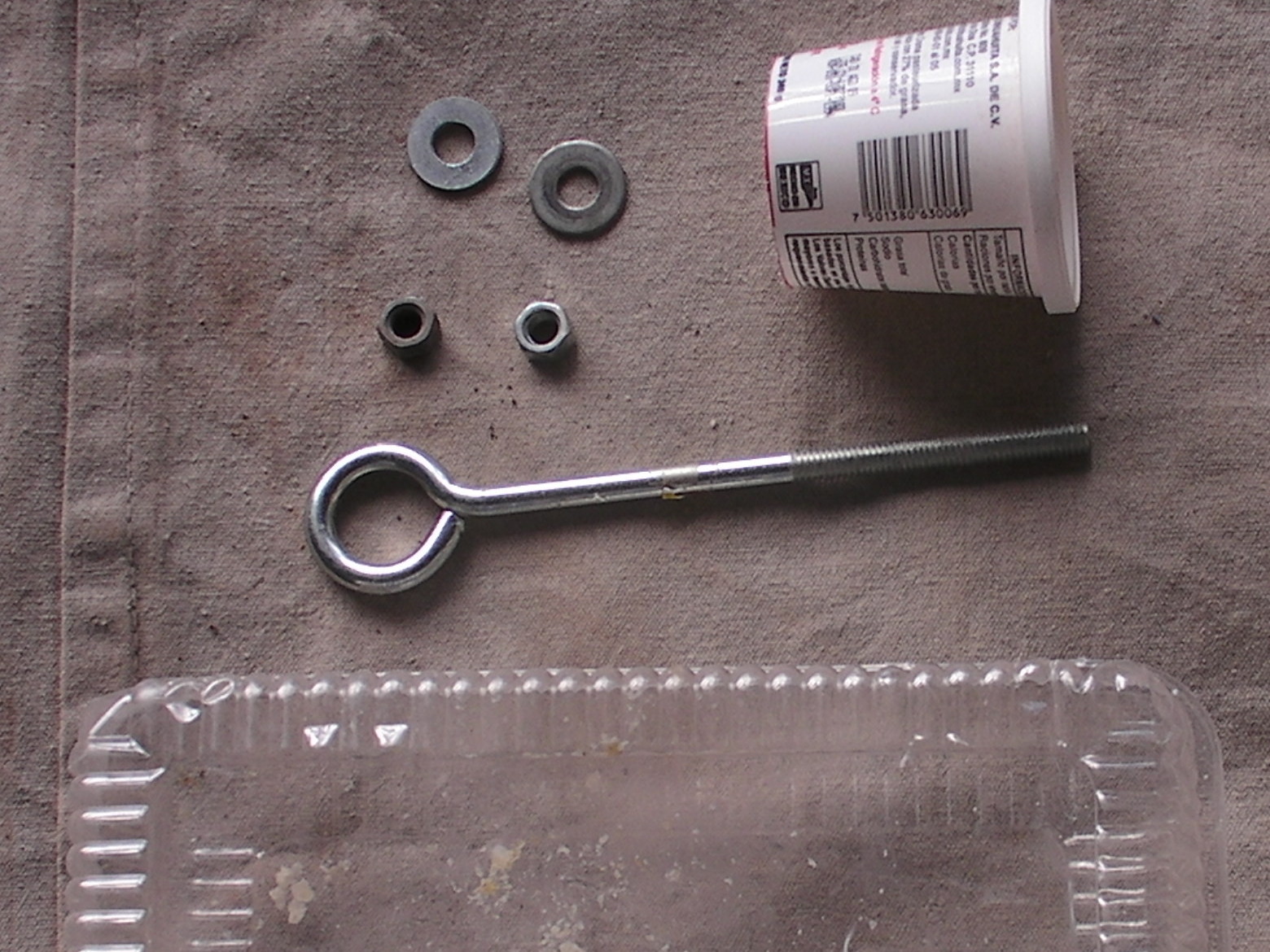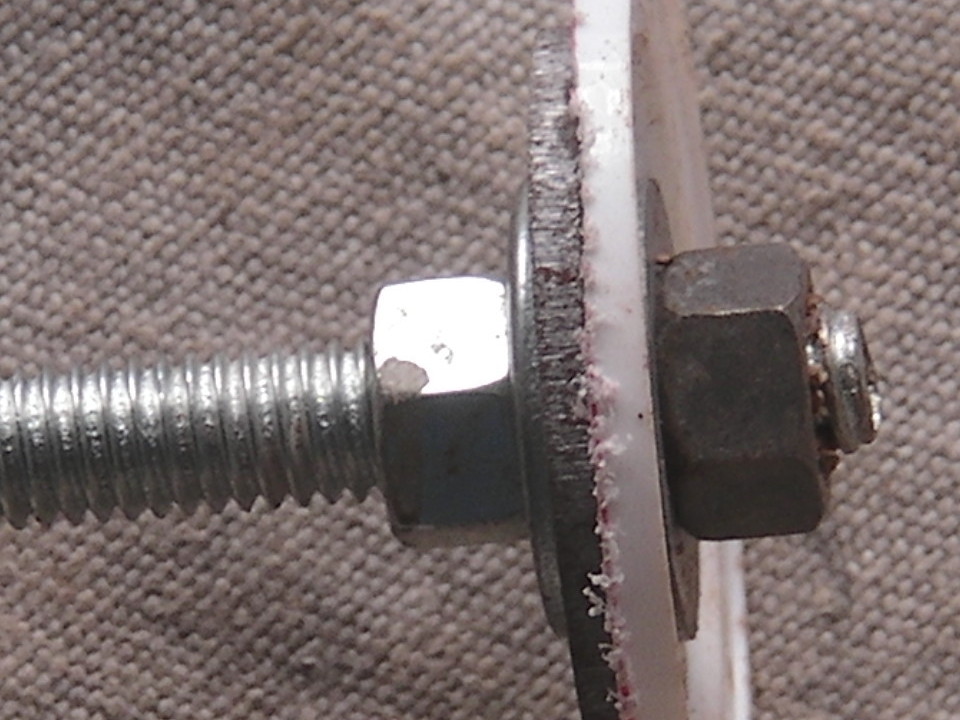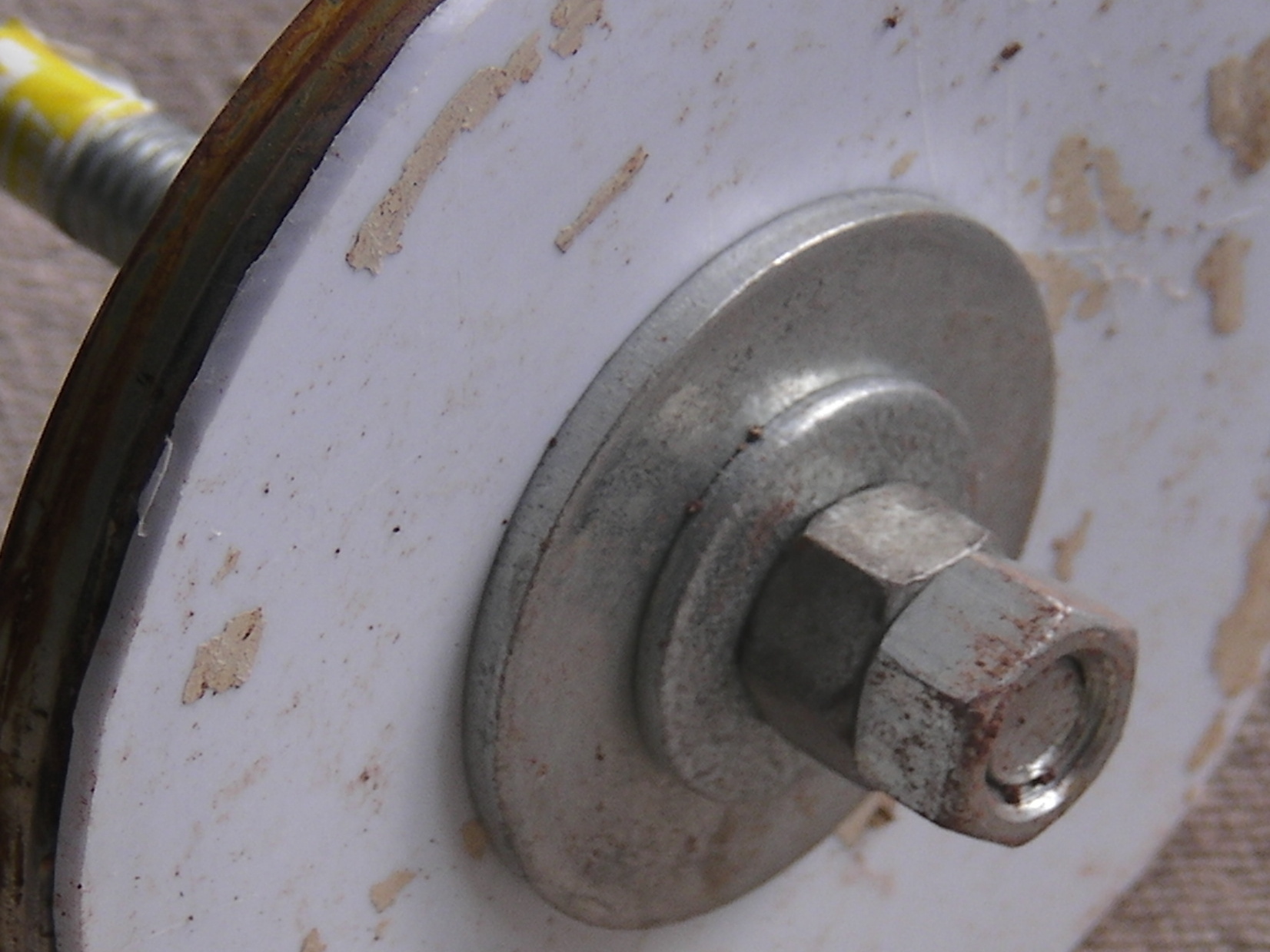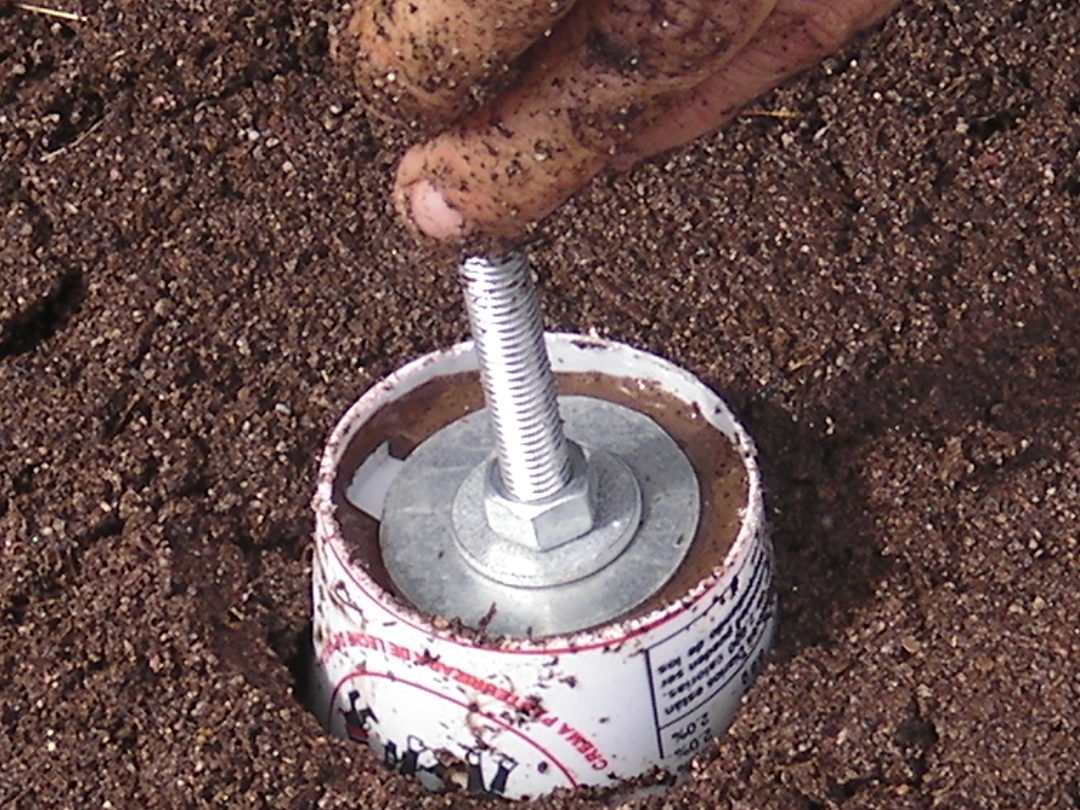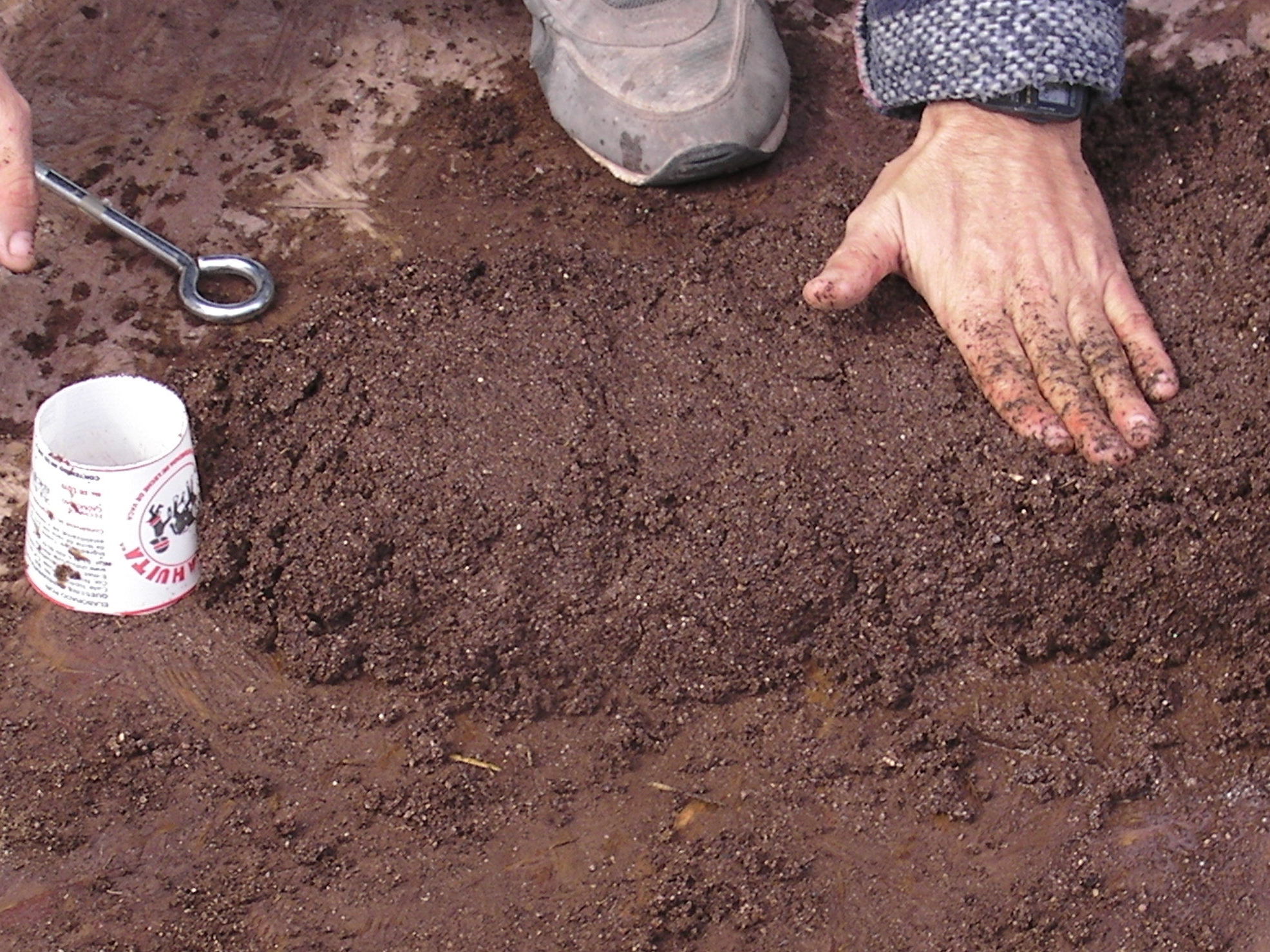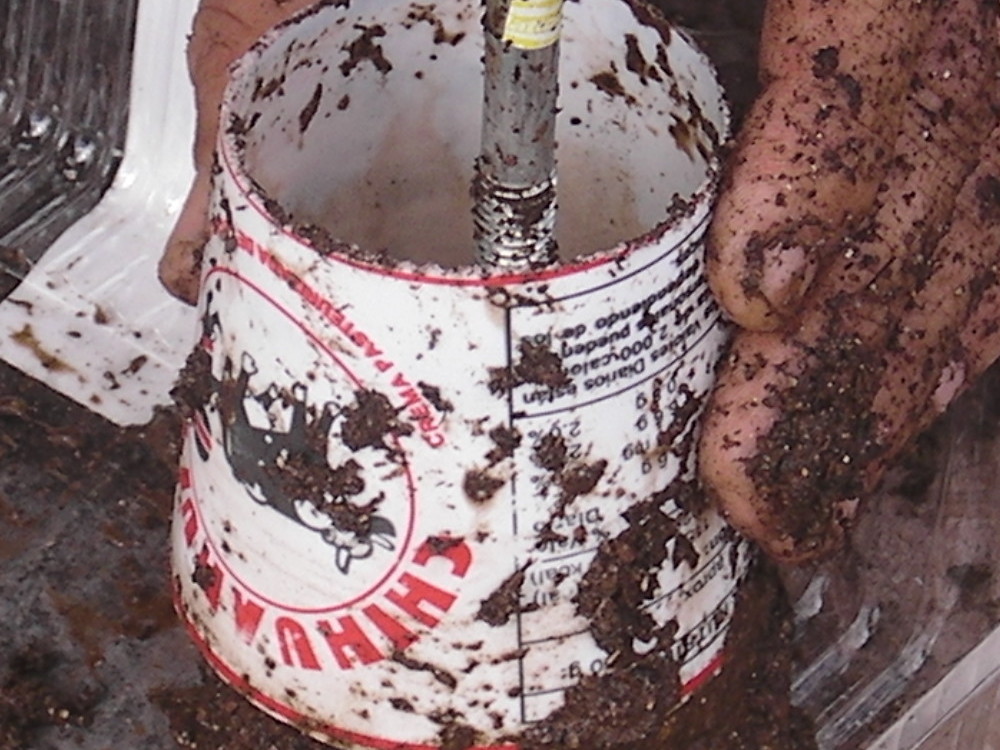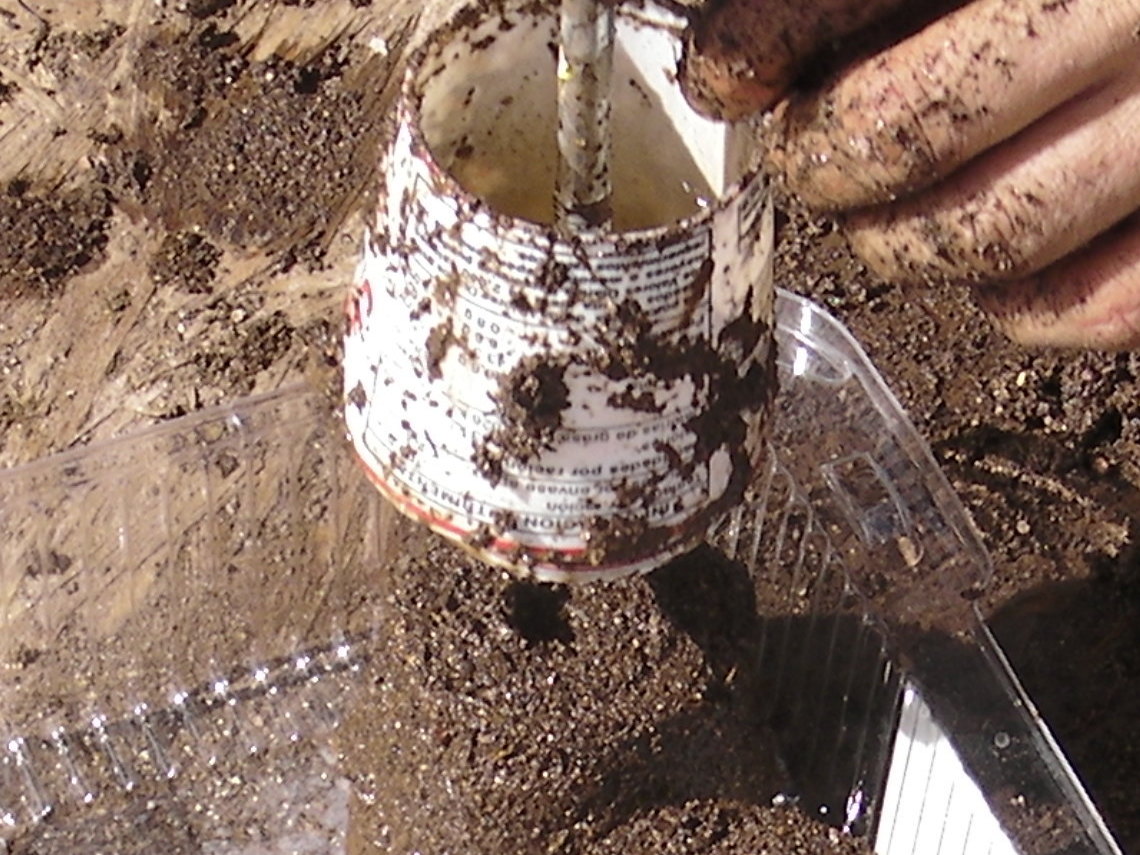Set up a nice large work area. You’ll want a hard surface like a concrete slab to dump your mix, and then another area to keep your trays and blocks once they are made. Dump your mix onto your hard surface. Wet your mix. Be careful with this step, as most people won’t add enough water initially. You want your mix thoroughly moist, and almost dripping water. Make a large pile of your wetted mix. The pile should be an inch taller than your block maker. Place the plunger into the cylinder of your blocker. The eye should come through the top towards you.
Dip the blocker in water. Now ram the blocker, bottom first into the mix until it hits the hard surface below. Give it a few twists and turns to make sure it is making contact with the surface. Pack the soil lightly, but firmly with the plunger. This should “seat” the soil in the blocker. Pull the blocker with soil out of your pile of mix.
Gently lift the blocker, and the soil should stay inside. If it falls out, try again, and gently twist and tilt the blocker as you lift the blocker. If the soil won’t stay on the blocker, add a bit more water and pack the soil a bit harder. Place the blocker with contained soil bottom down in your tray. With one hand, press down with the eye bolt. With the other hand, gently raise the cylinder, twisting the cylinder as it rises.
You should be left with a nice, compacted soil block on your tray. The eye bolt and nuts will leave a good depression to place seeds. Once you have made several blocks, place a seed or two in each block depression, then cover lightly with a bit of mix. Be sure to keep your blocks moist, watering them daily. Once the seeds sprout, you can remove the lid from the container. Depending on your plants, you can usually transplant 2-4 weeks after they spout. Handle the blocks with care during transplanting, and using a spatula makes it easy to lift the blocks out of the tray.


